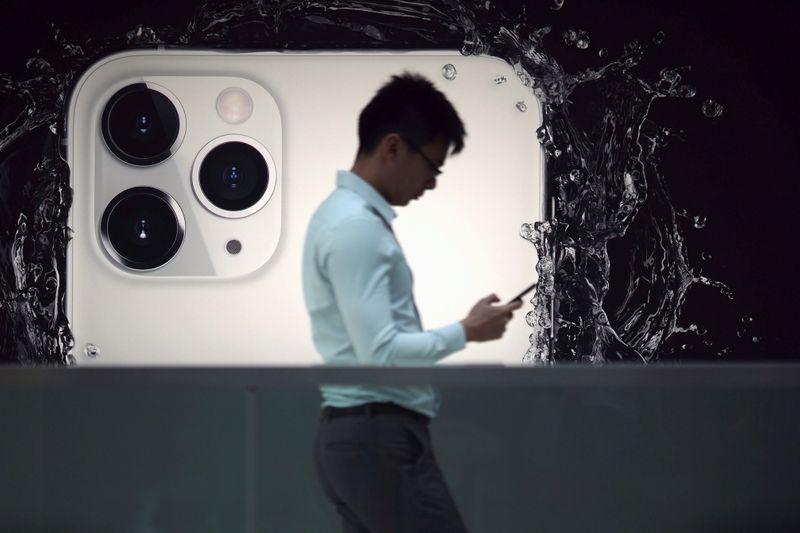(Reuters) - Wall Street analysts were smitten by a rebound in sales of Apple Inc's (O:AAPL) iPhones after a year of decline. So much, in fact, that they looked past a weaker-than-expected rise in services revenue, the company's growth driver.
At least 15 brokerages raised their price targets on the company's stock on Wednesday, with D.A. Davidson setting the most bullish price target of $385, well above the stock's current median price target of $325.
Shares of the company rose 3% to a record high of $326 in early trading, providing the biggest boost to the benchmark S&P 500 (SPX) index.
"We see Apple's December 2019 quarter as a microcosm for its calendar 2020 performance, with the iPhone, once again, returning to the front and center," D.A. Davidson analyst Tom Forte said.
Forte attributed part of the iPhone bounce to Apple's new credit initiatives, which enable consumers to purchase a phone and pay for it in monthly installments without paying interest.
Investors have fretted over the long-term growth prospects of the company's phone business, which has been buffeted by increased competition from cheaper phones from rivals such as Samsung (KS:005930) and Huawei.
Oppenheimer analyst Rick Schafer argued that the widely touted release of a 5G iPhone later this year would likely spur demand.
Robust iPhone sales during the holiday season helped the company make up for weakness in its services revenue in the company's fiscal first quarter of 2020 reported on Tuesday.
The services business, which includes the Apple TV+ streaming service, iCloud storage plans and fees from app developers, has consistently grown over the past two years, reaching $12.7 billion in revenue in the quarter.
Cowen and Co analyst Krish Sankar noted that the services segment reached its $50 billion run rate target ahead of schedule and argued that the company's pivot to a content oriented recurring revenue model is a powerful long-term earnings driver.

Investors have become excited about services because they believe they will lead to durable profits: the services are sold as a subscription billed each month or year, with most consumers leaving them on autopilot, while a new phone, tablet or laptop is often a sporadic purchase every few years, subject to the whims of consumer sentiment.